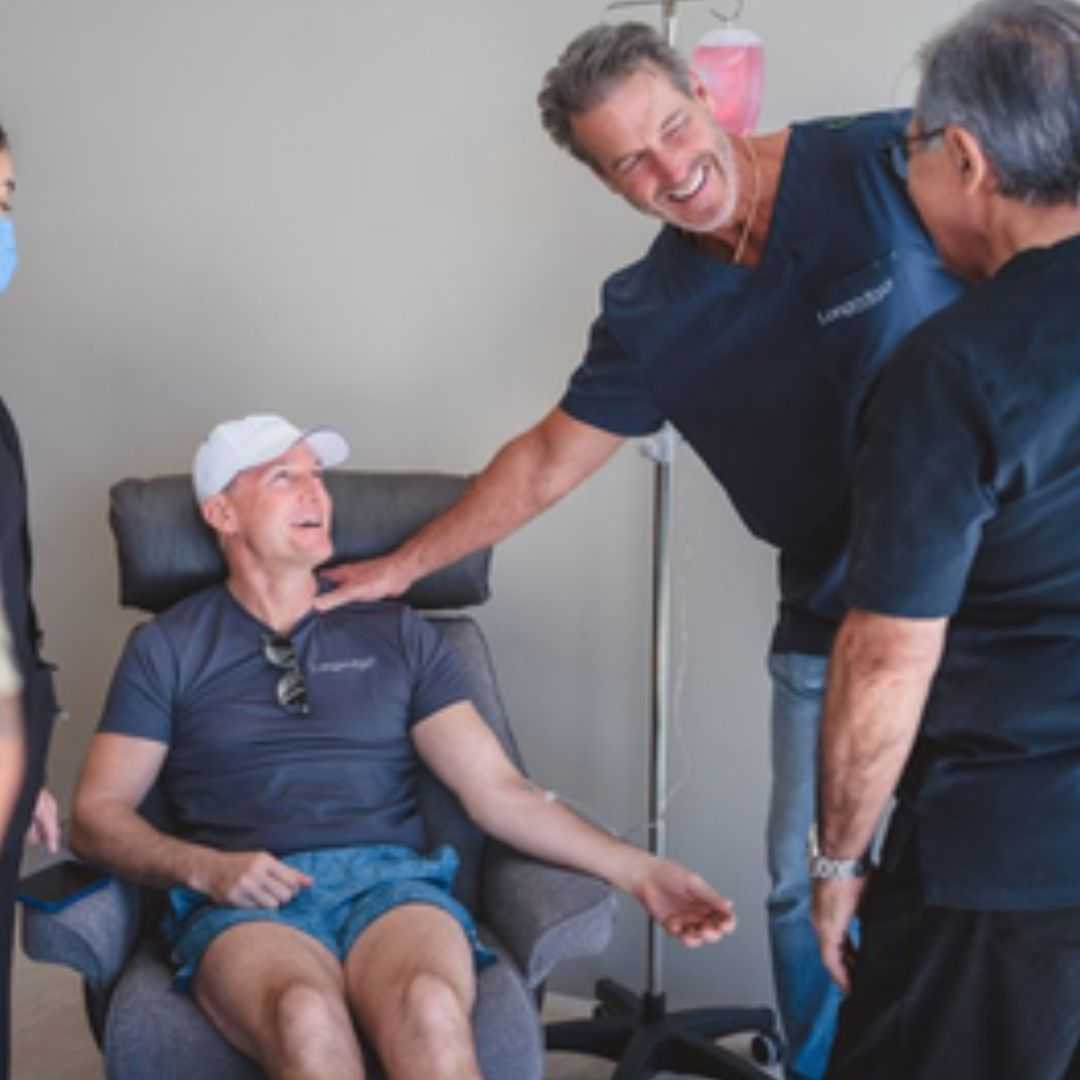
Regain Your Strength: Understanding Biceps Tendon Rupture & Your Treatment Options
A sudden pop, immediate pain, and a feeling of weakness in your arm – these are often the tell-tale signs of a biceps tendon rupture. Whether you're an athlete, a manual laborer, or someone who simply experienced an unexpected fall, this injury can severely impact your daily life, making simple tasks like lifting or carrying difficult. The good news is that treatment, often involving surgical repair, can effectively restore strength and function. For many, seeking this specialized care abroad offers not only world-class expertise but also a significant financial advantage, making recovery more accessible than ever before.
Understanding the nuances of a biceps tendon rupture, from its symptoms and causes to the various treatment approaches and recovery expectations, is the first step towards getting your arm back in motion. This guide will walk you through everything you need to know, including why medical tourism is a viable and often superior option for your journey to recovery.
What are the common symptoms of a biceps tendon rupture?
When a biceps tendon ruptures, the onset of symptoms can be quite dramatic and unmistakable. Recognizing these signs early is crucial for timely diagnosis and effective treatment. Patients frequently describe:
- Sudden, Sharp Pain: Often felt intensely in the upper arm or shoulder (for proximal ruptures) or near the elbow (for distal ruptures). This pain can be severe immediately after the injury.
- Audible "Pop" or "Snap": Many individuals report hearing or feeling a distinct tearing sensation at the moment of injury. This is a common indicator that a tendon has ruptured.
- Visible Bruising and Swelling: Discoloration and puffiness typically appear in the affected area within hours or days of the injury, extending down the arm.
- Weakness in the Arm: A noticeable decrease in strength, particularly when trying to bend the elbow, lift objects, or rotate the forearm (supination).
- "Popeye" Muscle Deformity: This is a classic sign of a complete proximal biceps tendon rupture. The detached muscle can retract and form a visible bulge higher up in the arm, resembling the cartoon character Popeye's bicep.
- Difficulty with Arm Movement: Pain and weakness can make it challenging to perform everyday tasks, such as reaching overhead, carrying bags, or twisting a doorknob.
- Cramping: Some patients experience muscle cramping in the biceps, especially with activity.
If you experience any of these symptoms, especially after a sudden trauma or heavy lifting, it's important to seek medical attention promptly to assess the extent of the injury and discuss appropriate treatment options.
What causes a biceps tendon rupture and who is at risk?
A biceps tendon rupture typically occurs when the muscle contracts powerfully and suddenly against a heavy load, or due to a direct impact. It's often not just one factor but a combination of stress and underlying tendon degeneration that leads to the tear. Here's a breakdown:
Common Causes:
- Sudden, Forceful Contraction: Lifting a heavy object, especially if done quickly or with poor form, is a common culprit. For example, catching a falling heavy box or performing an unexpected pull-up.
- Fall onto an Outstretched Arm: This can create a shearing force that tears the tendon, particularly in older individuals.
- Repetitive Overhead Activities: Athletes involved in sports like weightlifting, tennis, baseball, or swimming put repetitive stress on their biceps tendons, making them more susceptible to injury over time.
- Direct Trauma: A direct blow to the arm can also cause a rupture, though this is less common.
Who is at Risk?
While anyone can rupture a biceps tendon, certain factors increase the likelihood:
- Age: As we age, tendons naturally weaken and become less elastic, making individuals over 40 more prone to ruptures.
- Heavy Lifting and Manual Labor: Occupations or hobbies involving frequent heavy lifting or repetitive arm movements significantly increase risk.
- Smoking: Nicotine can impair blood supply to tendons, compromising their strength and healing capacity.
- Corticosteroid Use: Long-term use of corticosteroids, either orally or via injection, can weaken tendons.
- Certain Medical Conditions: Conditions like diabetes or kidney disease can affect tendon health.
- Previous Shoulder Injuries: Rotator cuff tears or shoulder impingement can increase stress on the biceps tendon.
Understanding these causes and risks can help in prevention, but when an injury occurs, knowing the next steps is vital for recovery.
What are the treatment options for a ruptured biceps tendon?
The choice of treatment for a biceps tendon rupture depends on several factors, including the location of the tear (proximal at the shoulder or distal at the elbow), the severity (partial or complete), the patient's age, activity level, and overall health. While some partial tears can be managed non-surgically, complete ruptures, particularly in younger, active individuals, often benefit greatly from surgical intervention.
Non-Surgical Treatment:
Primarily for partial tears, older individuals with low activity demands, or those with significant health risks for surgery.
- Rest and Immobilization: Using a sling to limit arm movement.
- Ice: Applying cold packs to reduce swelling and pain.
- Pain Medication: Over-the-counter anti-inflammatory drugs (NSAIDs) to manage pain and inflammation.
- Physical Therapy: Once initial pain subsides, exercises to restore range of motion and strengthen surrounding muscles, helping compensate for the lost biceps function.
Surgical Repair:
This is the definitive treatment for complete ruptures and is often recommended for active patients who want to restore full strength and prevent a cosmetic deformity. Surgical intervention is common for both proximal (shoulder) and distal (elbow) biceps tendon ruptures.
- Proximal Biceps Tendon Repair (Shoulder): This procedure involves reattaching the torn tendon to the bone in the shoulder, often using sutures anchored into the bone. Techniques vary, including tenodesis (attaching the tendon to the humerus bone) or tenotomy (simply cutting the tendon and allowing it to retract, often chosen for less active individuals or those with other shoulder issues to avoid potential pain).
- Distal Biceps Tendon Repair (Elbow): This procedure reattaches the torn tendon to the radius bone in the forearm, typically through a small incision near the elbow. This is crucial for restoring elbow flexion and forearm supination (the ability to turn the palm upward).
The goal of surgery is to restore the original anatomy as much as possible, providing long-term strength and stability. Your surgeon will discuss the best approach based on your specific injury and lifestyle.
Who is a candidate for biceps tendon repair surgery?
While surgery isn't for everyone, it's often the recommended course for a specific group of patients aiming for the best possible outcome. You might be an ideal candidate for biceps tendon repair surgery if you fit these criteria:
- Complete Tendon Rupture: Surgery is most commonly recommended for full tears, where the tendon has completely detached from the bone. Partial tears may heal with conservative treatment.
- Active Lifestyle: If you're an athlete, regularly engage in physical activities, or have a job that requires significant arm strength (e.g., construction, lifting), surgical repair helps restore maximum function and power.
- Desire for Full Strength and Function: Patients who want to regain the highest possible level of strength, endurance, and range of motion in their arm are good candidates.
- Concern about Cosmetic Deformity: The "Popeye" deformity resulting from a proximal tear can be aesthetically bothersome for some patients, and surgery can correct this.
- Distal Biceps Tendon Rupture: Most complete distal biceps tendon ruptures (at the elbow) are recommended for surgical repair because non-surgical treatment often leads to significant, permanent loss of forearm supination (turning the palm up) and elbow flexion strength.
- Overall Good Health: Patients should be in good general health, without uncontrolled medical conditions that would significantly increase surgical risks.
- Timely Diagnosis: Surgery is generally most successful when performed within a few weeks (typically 2-3 weeks, sometimes up to 4-6 weeks) of the injury, before the tendon retracts too far or scarring sets in.
Your orthopedic surgeon will evaluate your specific injury, lifestyle, and goals to determine if surgery is the best path for your recovery.
What is the recovery time and process after biceps tendon surgery?
Recovery is a crucial phase after biceps tendon surgery, demanding patience and commitment to physical rehabilitation. The timeline can vary based on the individual, the type of repair, and adherence to post-operative instructions, but generally follows a predictable course:
Immediate Post-Op (0-2 Weeks):
- Immobilization: The arm will be placed in a sling or brace to protect the repair and limit movement.
- Pain Management: Prescribed pain medication and ice will help manage discomfort and swelling.
- Gentle Movement: Often, passive range of motion exercises for the hand, wrist, and shoulder (if a distal repair) are started, carefully avoiding stress on the repair site.
Early Rehabilitation (2-6 Weeks):
- Gradual Increase in Motion: Under the guidance of a physical therapist, active-assisted and then active range of motion exercises begin, progressively increasing flexibility.
- Sling Removal: The sling may be removed for short periods or discontinued as tolerated, depending on the surgeon's protocol.
Strengthening Phase (6 Weeks - 3 Months):
- Progressive Strengthening: Light strengthening exercises for the biceps and surrounding muscles are introduced, gradually increasing resistance.
- Functional Activities: Working towards regaining strength for everyday tasks.
- Caution: Avoid heavy lifting or forceful movements.
Advanced Strengthening & Return to Activity (3-6 Months):
- Sport-Specific Training: For athletes, this phase focuses on more dynamic and sport-specific exercises.
- Increasing Load: The intensity of strengthening exercises continues to increase.
- Return to Light Work/Activities: Depending on the activity, a gradual return may be possible.
Full Recovery (6-12 Months):
- Complete Strength & Endurance: Most patients achieve near full strength and range of motion.
- Return to Strenuous Activities: Full return to heavy lifting, contact sports, and demanding occupations is typically cleared by the surgeon once full strength and stability are confirmed.
Diligence with your physical therapy program is paramount. Skipping sessions or pushing too hard too soon can compromise the surgical repair and delay your recovery.
What are the risks and potential complications of biceps tendon surgery?
While biceps tendon repair surgery is generally safe and effective, it's important for patients to be aware of the potential risks and complications, just as with any surgical procedure. Your surgeon will discuss these in detail, but here are some common concerns:
- Infection: A risk with any surgical incision, though typically minimized with antibiotics and sterile techniques.
- Nerve Damage: Nerves near the surgical site can be irritated or, in rare cases, damaged, leading to numbness, tingling, or weakness. This is a particular concern with distal biceps repair due to the proximity of radial and median nerves.
- Re-Rupture: Although uncommon, the repaired tendon can tear again, especially if proper rehabilitation protocols are not followed or if there's new trauma.
- Stiffness or Limited Range of Motion: Some patients may experience ongoing stiffness, even with diligent physical therapy.
- Persistent Pain: While surgery aims to alleviate pain, some residual discomfort or tenderness at the surgical site can occur.
- Heterotopic Ossification: The abnormal formation of bone in soft tissue, particularly around the elbow after distal biceps repair, which can limit movement.
- Cosmetic Deformity: While surgery aims to correct the "Popeye" deformity, some subtle changes in muscle contour or scarring might remain.
- Anesthesia Risks: Reactions to anesthesia, including nausea, vomiting, or more serious cardiac or respiratory complications, though rare.
- Blood Clots: A small risk of deep vein thrombosis (DVT) in the arm or leg.
Choosing an experienced surgeon and a reputable facility significantly minimizes these risks. Adhering to post-operative instructions and attending all physical therapy sessions are also critical for a successful outcome and to reduce the chance of complications.
How much does biceps tendon repair surgery cost worldwide?
One of the primary drivers for medical tourism is the significant disparity in healthcare costs across different countries, even for common procedures like biceps tendon repair. Patients often find high-quality care at a fraction of the price compared to their home countries. Here’s a general overview, though prices can vary based on the clinic, surgeon's experience, type of repair, and inclusions (e.g., hospital stay, rehabilitation):
| Country/Region | Estimated Cost Range (USD) | Notes |
|---|---|---|
| United States | $10,000 - $25,000+ | High cost, often due to facility fees, surgeon fees, and anesthesia. May be covered by insurance. |
| Canada / Western Europe (e.g., UK, Germany) | $8,000 - $18,000 | Costs can be high for private care or if not covered by public healthcare systems. |
| Mexico | $3,500 - $7,000 | Popular for US patients due to proximity and significant savings. High-quality facilities in border cities and major hubs. |
| India | $3,000 - $6,000 | Known for advanced medical infrastructure and highly skilled surgeons at very competitive prices. |
| Turkey | $4,000 - $8,000 | Excellent modern facilities, experienced surgeons, and a growing hub for European and Middle Eastern patients. |
| Thailand | $4,500 - $8,500 | Offers a blend of quality healthcare and renowned hospitality, appealing to patients worldwide. |
| Costa Rica | $4,000 - $7,500 | A well-established destination for medical tourism, particularly for North American patients. |
These figures are estimates and can vary widely. It's crucial to get a personalized quote that includes all aspects of your treatment, including consultation, surgery, anesthesia, hospital stay, and initial follow-up.
Why should I consider biceps tendon surgery abroad?
For many patients facing a biceps tendon rupture, the decision to seek treatment abroad isn't just about the procedure itself; it's about optimizing their entire healthcare journey. Here are compelling reasons to consider medical tourism:
- Significant Cost Savings: As seen in the table above, the most compelling reason is often financial. Patients can save thousands of dollars, sometimes up to 70% compared to costs in their home country, without compromising on quality.
- Access to Immediate Care: In some countries, public healthcare systems may have long waiting lists for orthopedic procedures. Medical tourism offers the ability to schedule surgery quickly, preventing further complications or prolonged discomfort.
- World-Class Medical Expertise: Many medical tourism hubs boast state-of-the-art hospitals, highly trained surgeons often educated in Western countries, and advanced technology. These facilities frequently achieve international accreditations.
- Privacy and Anonymity: For some, undergoing a medical procedure away from home offers a level of privacy they wouldn't find locally.
- Combine Treatment with Travel: Patients can combine their recovery with a unique travel experience, enjoying different cultures and environments, potentially aiding in psychological well-being during recovery.
- Personalized Attention: Many international clinics pride themselves on offering highly personalized, patient-centric care, often with dedicated case managers who assist with every aspect of the medical journey.
For those without adequate insurance coverage or facing prohibitive costs at home, medical tourism presents an invaluable alternative for high-quality, affordable biceps tendon repair.
Which countries offer the best value for biceps tendon repair?
When seeking the best value for biceps tendon repair abroad, "value" encompasses not just low cost, but also quality of care, surgeon expertise, modern facilities, and patient support. Several countries have emerged as leaders in orthopedic medical tourism:
- Mexico: Particularly popular for patients from the United States and Canada due to its geographical proximity. Cities like Tijuana, Cancun, and Guadalajara offer JCI-accredited hospitals with excellent orthopedic departments and US-trained surgeons.
- India: A powerhouse in medical tourism, India offers highly advanced medical infrastructure, a vast pool of English-speaking, internationally trained specialists, and extremely competitive pricing. Major cities like Delhi, Mumbai, and Chennai are medical hubs.
- Turkey: Known for its rapidly developing healthcare sector, Turkey provides state-of-the-art hospitals, particularly in Istanbul and Antalya, attracting patients from Europe, the Middle East, and beyond with its blend of quality and affordability.
- Thailand: Combining renowned hospitality with top-tier medical care, Thailand's hospitals in Bangkok and Phuket are popular choices. They offer luxurious facilities, highly trained medical staff, and comprehensive packages for international patients.
- Costa Rica: For patients in North and South America, Costa Rica offers a well-established medical tourism industry. Its beautiful natural environment is also a draw for recovery, alongside modern clinics and skilled surgeons.
- South Korea: While sometimes a bit pricier than other Asian options, South Korea is known for its cutting-edge technology, highly advanced surgical techniques, and exceptional patient outcomes, particularly in orthopedic and sports medicine.
When selecting a destination, research not just the cost, but also clinic accreditations, surgeon credentials, patient reviews, and the level of post-operative care and support offered.
What should I expect when traveling for this procedure abroad?
Embarking on a medical journey abroad can seem daunting, but reputable medical tourism facilitators like PlacidWay streamline the process, making it as smooth and stress-free as possible. Here’s a general outline of what to expect:
- Initial Consultation & Planning:
- Research: Identify potential destinations and clinics based on your needs, budget, and desired quality.
- Online Consultation: Submit your medical records (MRI scans, X-rays, doctor's reports) for review by international specialists. You'll receive a treatment plan and a comprehensive quote.
- Travel Arrangements: Once you decide, your facilitator will help with flights, airport transfers, accommodation, and local transportation.
- Visa and Passport: Ensure your passport is valid and obtain any necessary visas.
- Arrival & Pre-Operative Phase:
- Arrival: You'll be met at the airport and transferred to your accommodation or the hospital.
- Local Consultations: Meet your surgeon in person, undergo a physical examination, and complete any necessary pre-operative tests (blood work, imaging).
- Detailed Discussion: Your surgeon will explain the procedure, risks, and recovery in detail, answering all your questions.
- The Procedure & Immediate Recovery:
- Surgery: Undergo the biceps tendon repair.
- Hospital Stay: Typically, a short overnight stay or a few days, depending on the procedure and your recovery.
- Post-Op Care: Receive immediate post-surgical care, pain management, and initial instructions for arm immobilization.
- Post-Operative Stay & Departure:
- Recovery Period: Plan to stay in the destination country for 1-2 weeks post-surgery to allow for initial healing, wound check-ups, and potentially beginning early physical therapy.
- Follow-up Instructions: Receive detailed instructions for at-home care, medication, and a rehabilitation plan to continue with a local physical therapist back home.
- Departure: Once medically cleared, you'll be assisted with your departure.
Throughout this process, a medical tourism facilitator acts as your guide, ensuring smooth coordination and support at every step.
How can I ensure safety and quality for medical treatment overseas?
Ensuring safety and high quality is paramount when considering medical treatment abroad. While cost savings are appealing, never compromise on your health. Here’s how you can confidently navigate the process:
- Choose Internationally Accredited Facilities: Look for hospitals accredited by organizations like the Joint Commission International (JCI). JCI accreditation signifies that a hospital meets rigorous international standards for patient care and safety.
- Verify Surgeon Credentials and Experience: Research your surgeon's qualifications, board certifications, specialized training, and experience specifically with biceps tendon repair. Many international doctors have trained in leading Western countries.
- Read Patient Reviews and Testimonials: Seek out feedback from previous international patients. Look for consistent positive experiences regarding care quality, outcomes, and overall service.
- Utilize Reputable Medical Tourism Facilitators: Companies like PlacidWay specialize in connecting patients with trusted providers, streamlining logistics, and vetting clinics and surgeons on your behalf. They offer an added layer of security and support.
- Ensure Clear Communication: The medical team should be able to communicate effectively in your language (or provide professional interpreters). Misunderstandings can lead to errors.
- Review the Treatment Plan Thoroughly: Understand every aspect of your procedure, including pre-op, surgery, post-op care, and rehabilitation. Ask questions until you feel completely informed.
- Check for Comprehensive Packages: Ensure the quoted price includes all necessary medical costs (surgeon, anesthesia, hospital, medications) and clearly states what is and isn't included.
- Emergency Preparedness: Understand the clinic's emergency protocols and ensure you have travel insurance that covers medical emergencies and evacuation.
By taking these proactive steps, you can significantly enhance the safety and quality of your medical tourism experience.
Can I read patient success stories about biceps tendon repair abroad?
Hearing from others who have successfully navigated the journey of biceps tendon repair abroad can be incredibly reassuring and informative. Patient success stories offer real-world perspectives on what to expect, the quality of care, and the positive outcomes achieved.
- Medical Tourism Facilitator Websites: PlacidWay and similar platforms often feature detailed patient testimonials, video interviews, and written accounts from individuals who have undergone various procedures, including orthopedic surgeries, in different countries. These often highlight the complete journey, from initial inquiry to post-recovery.
- Clinic and Hospital Websites: Reputable international clinics and hospitals frequently publish patient success stories directly on their websites. These can include before-and-after photos (if relevant to the procedure) and direct quotes from satisfied patients.
- Online Forums and Social Media Groups: Dedicated medical tourism forums, health-related social media groups, and patient communities can be excellent resources. Here, individuals share their unvarnished experiences, recommendations, and advice regarding specific procedures and destinations.
- Independent Review Platforms: Websites like Google Reviews, Facebook, and specialized healthcare review sites may also contain reviews from international patients, offering insights into their experiences with specific doctors and hospitals.
When reviewing success stories, look for details about the patient's original condition, the treatment received, the recovery process, and their overall satisfaction with the medical facility and staff. These stories can provide invaluable encouragement and guidance as you consider your own options for biceps tendon repair abroad.
Take the Next Step with PlacidWay
Ready to explore treatment options abroad? Discover top clinics, compare prices, and get a free quote tailored to your needs with PlacidWay.
Orthopedic Surgery Abroad, Knee Sugery Abroad

-Package-in-Bangkok-Thailand-at-LRC-Fertility-Center.jpg)








Share this listing